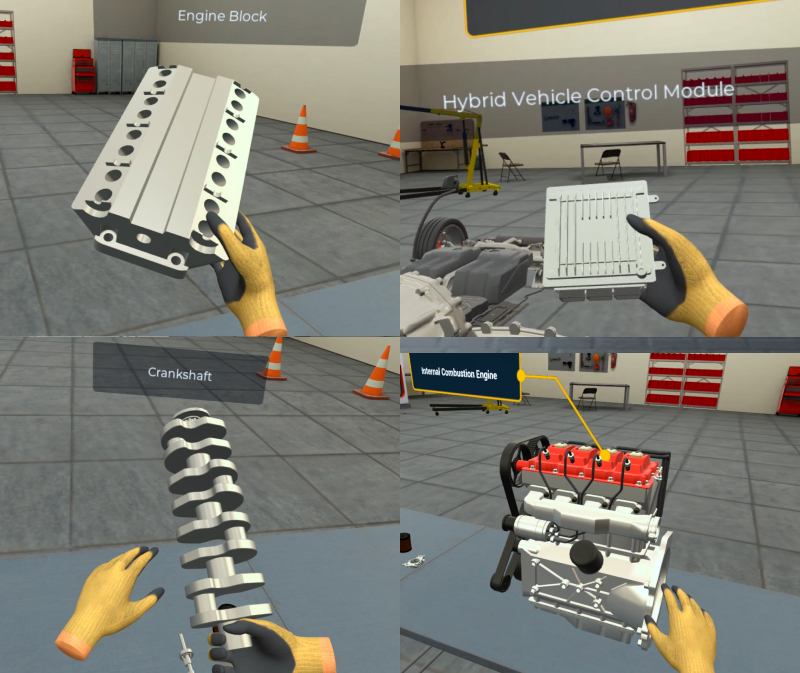
VR, 3D ILV, Interactive Modules

3.5 Hours

Technician

VR or Web-based

This Internal Combustion Engine in Hybrid Vehicles microcredential provides a comprehensive overview of how ICE technology is adapted and integrated within modern hybrid electric vehicles (HEVs). Learners explore the historical development of ICEs, their function within hybrid powertrains, and their interaction with key systems such as electric motors, battery packs, and control modules. Emphasis is placed on engine design considerations, operational strategies like start-stop and load sharing, and techniques for improving fuel efficiency. Virtual Reality (VR) modules enhance learning through immersive simulations of ICE components, efficiency systems, and hybrid-specific configurations.


At ImmerseLearn, we prepare hybrid vehicle technicians for the complexity of dual-power systems and integrated propulsion technologies. This course emphasizes both mechanical fundamentals and hybrid-specific system knowledge, enabling learners to contribute confidently to hybrid vehicle assembly, diagnostics, and optimization.
Trace the journey from early gasoline engines to modern high-efficiency ICEs and understand their evolving role in reducing emissions and increasing fuel economy in hybrid vehicles.
Gain practical knowledge of how the ICE interfaces with hybrid system components including the electric motor, power control unit (PCU), battery pack, and inverter/converter.
Learn how hybrid ICEs operate in varied modes such as start-stop, load sharing, engine-off coasting, and regenerative coordination, and apply fuel-saving strategies used in real-world hybrid designs.
Recognize potential hybrid-specific safety considerations related to ICE and understand how subsystems communicate via the Hybrid Vehicle Control Module (HVCM) to maintain operational harmony.
Interpret system data related to ICE efficiency, engine run-time optimization, and energy balancing across hybrid drive modes.
Interactively explore ICE systems within hybrid vehicles using immersive VR simulations that cover design placement, operational states, and subsystem collaboration—reinforcing theory with realistic practice.
By completing this microcredential, students will be prepared to work safely and effectively with hybrid internal combustion engines—contributing to the development, service, and optimization of advanced hybrid electric vehicles.

South Lyon, MI, 48178
© ImmerseLearn